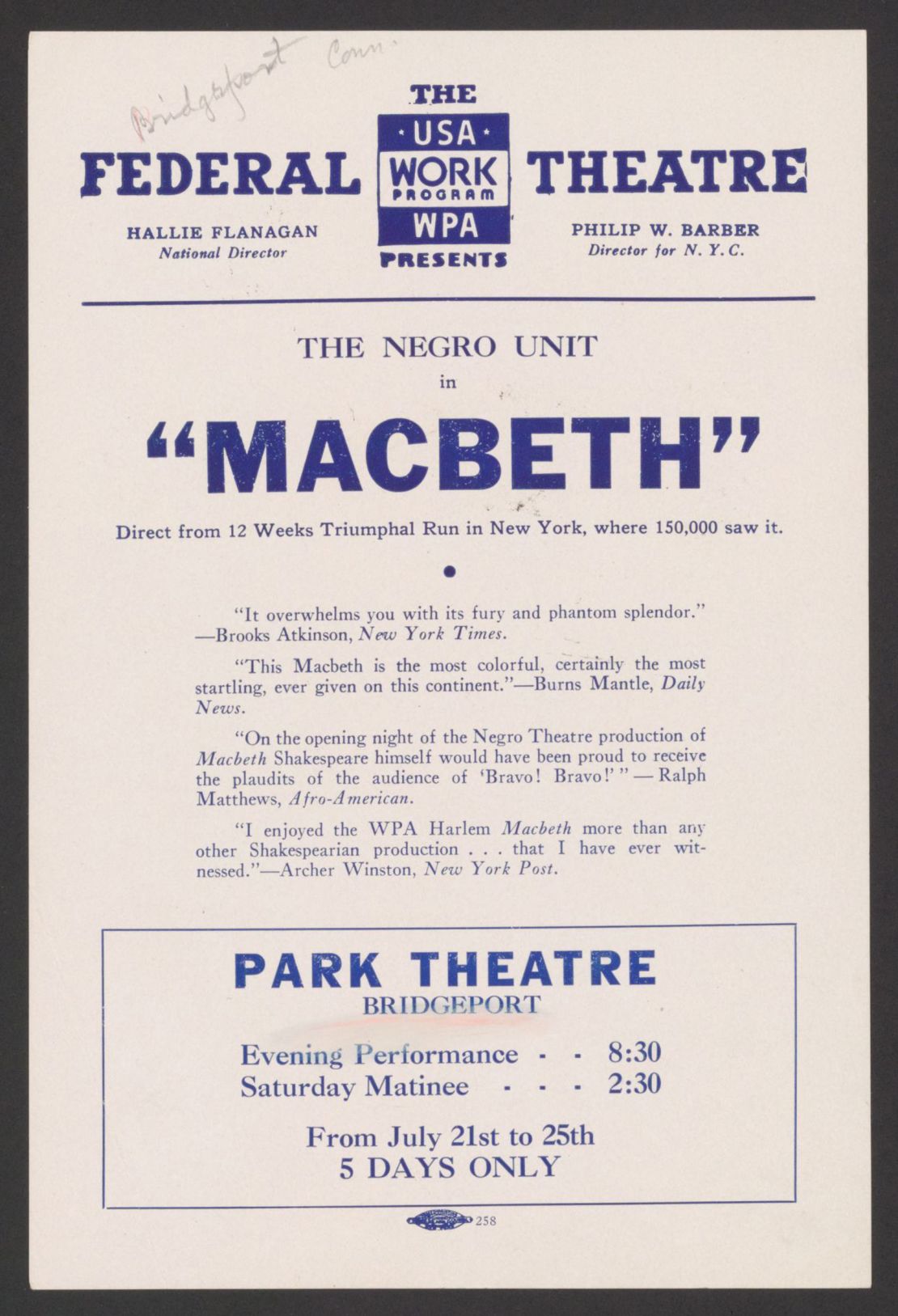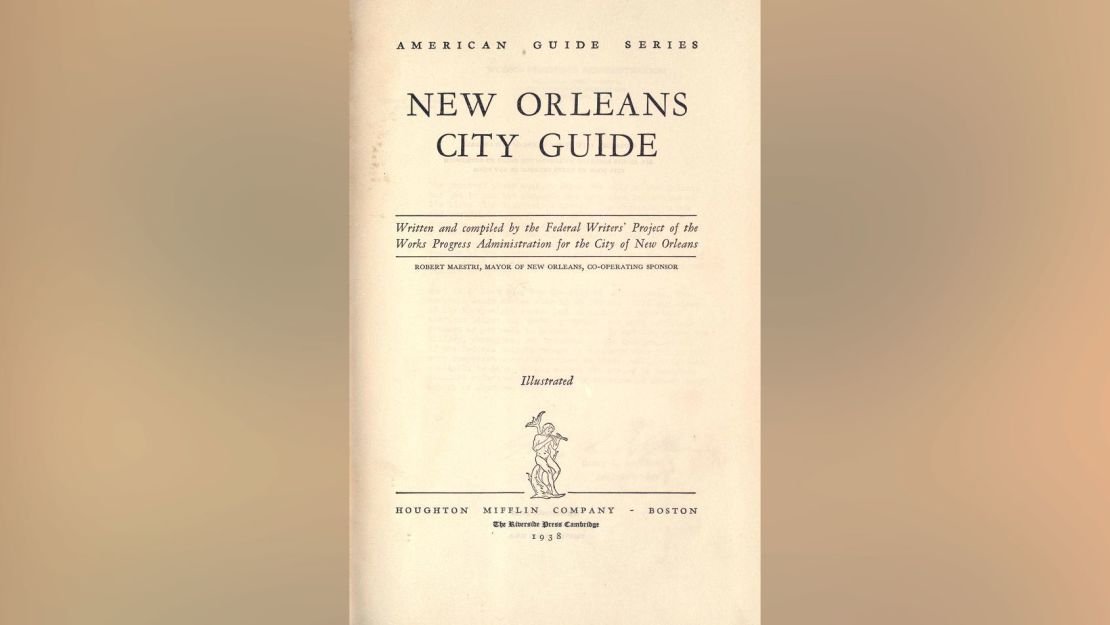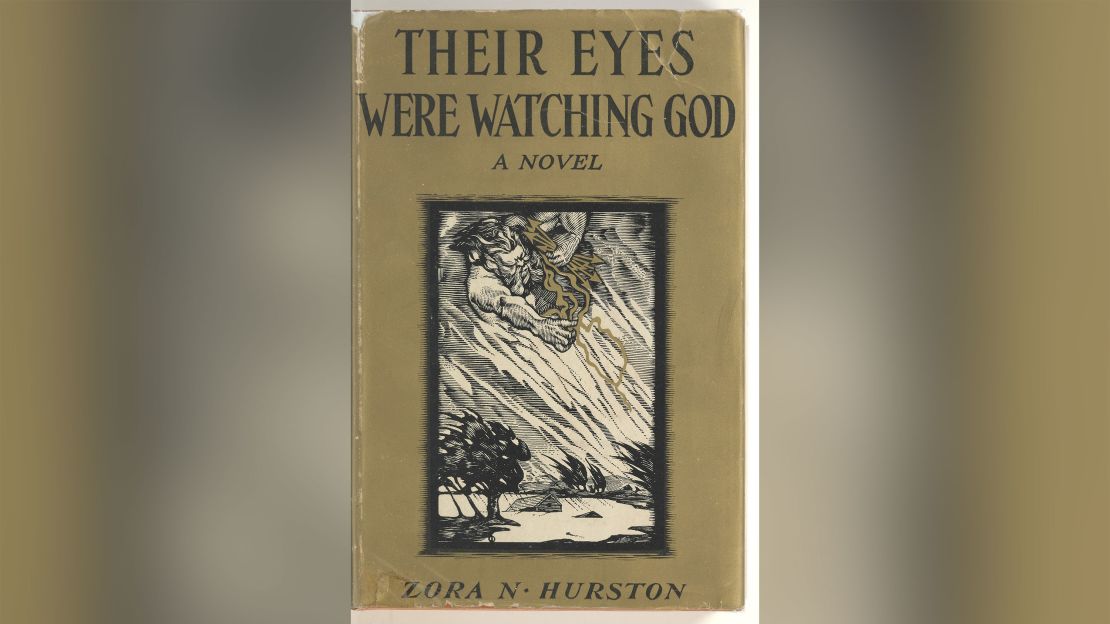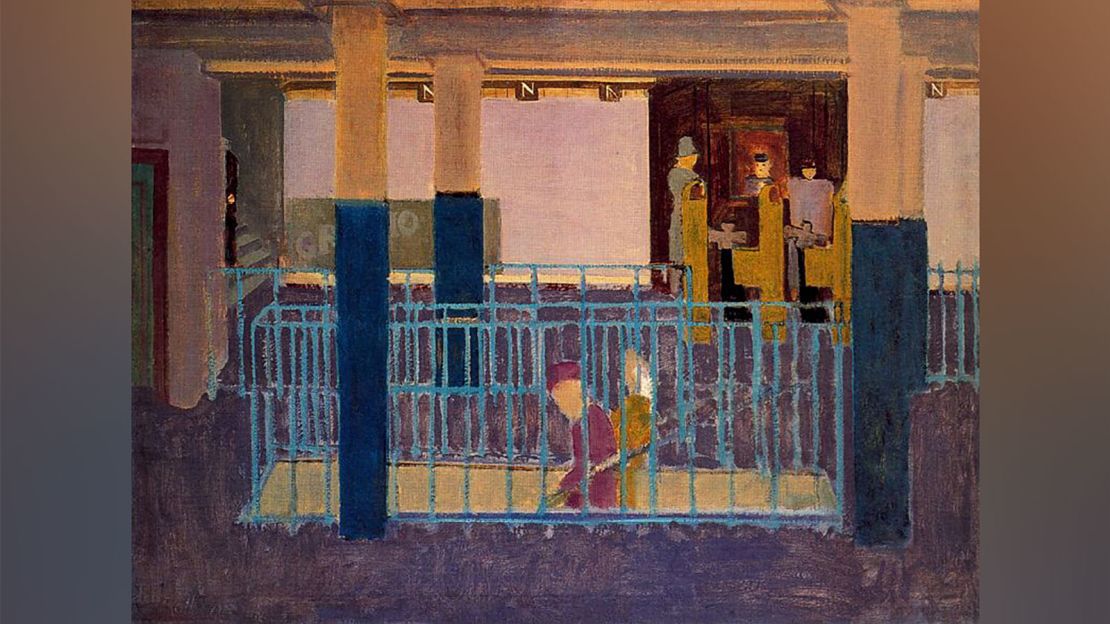As the coronavirus pandemic drastically undermines the economy, arts administrator Deana Haggag finds herself in brand new territory.
Haggag, the president and CEO of United States Artists (USA), told CNN that a few weeks ago it became clear to her that “most cultural organizations were going to be shut down.” She set in and just started “monitoring the layoffs.”
In the art world, like in many sectors, the job losses were brutal.
“For many of us, we’ve never been here,” Haggag said in a phone interview. “This is the biggest crisis our country has faced in many of our lifetimes.”
She set to work behind the scenes to do something about it.
On Wednesday, her organization announced a $10 million collaborative grant program called Artist Relief. USA is working in coalition with six other major arts non-profits including Academy of American Poets, Artadia, Creative Capital, Foundation for Contemporary Arts, MAP Fund and the National YoungArts Foundation.
They’re offering $5,000 grants to at least 100 artists per week, from poets to architects to weavers. They’re hoping to be able to expand the program to more artists if funds allow.
She was deeply proud of getting so many organizations to agree on something so big so quickly.
“This is cause for celebration,” she said. But at the same time, she acknowledged launching the program was bittersweet. “Reading these applications is gut-wrenching, it’s absolutely heart-breaking.”
She said in the first three hours, the group’s portal received 2,200 applications from artists in need, and they expected to receive 10,000 on the first day.
From sound technicians to illustrators to ticket sellers, more than five million Americans are employed in the arts and culture sector, according to the Bureau of Economic Analysis.
And programs like the one Haggag leads can only do so much to address the tidal wave of need.
The arts are indicative of the wider economic situation
April’s unemployment numbers showed an historic spike in the number of Americans filing for unemployment. The Department of Labor said that for the week ending March 28, some 6.6 million Americans filed for benefits, a 3,000% spike over the claims numbers from last month. And businesses continue to lay off and furlough workers.
As we enter a global recession, it’s worth a look back at how Americans rallied during previous times of economic hardship, and to consider how it might inform our response to our present dilemma.

Active from 1935 to 1943, the Works Progress Administration (WPA) was a New Deal program designed to give Americans paid work during the Great Depression while jobs were scarce.
The program would employ some 8.5 million Americans involved in 1.4 million public works projects, according to the Library of Congress.
In addition to the nationwide infrastructure projects, for four of its years of existence the WPA housed Federal Project Number One. That project organized Depression-era work programs for thousands of artists, musicians, writers, theatrical performers and historians.
And its legacy goes beyond getting cultural workers back into employment.
Work Progress Administration Art
The Works Progress Administration helped unemployed artists
The WPA would “give some of the best writers of the 20th century their first job writing,” author David A. Taylor told CNN over the phone.
Taylor penned the book “Soul of a People: The WPA Writers’ Project Uncovers Depression America,” which was also turned into a documentary with the same title, chronicling one aspect of the WPA, the Federal Writers’ Project.
That program alone employed as many as 7,500 people during its existence from 1935 to 1939.
The Writers’ Project is perhaps best known for its American Guides, a series of locally written travel guides for cities and states.
Those on its payroll included would-be literary luminaries such as Richard Wright, Zora Neale Hurston, Ralph Ellison and Saul Bellow – who would go on to win the Nobel Prize in Literature.
During her time with the WPA, Hurston used her BA in anthropology to chronicle life histories in the American South. She wrote her classic novel “Their Eyes Were Watching God,” published in 1937, while doing her WPA-funded field work in Florida.
Ellisson’s 1952 classic “Invisible Man” was drawn from character studies from his time interviewing people during his job on the Federal Writers’ Project in the late 1930s, Taylor said.
The Federal Writers’ Project also preserved histories of African American folklore and life that otherwise wouldn’t have been recorded. Some are memorialized in the Slave Narrative Collection at the Library of Congress.
In the film “Soul of a People,” Maryemma Graham, a professor of English and African American Studies at the University of Kansas argues that “the largest single impact on black writing before the civil rights movement was really the WPA, not the Harlem Renaissance.”
The WPA’s Federal Art Project, Federal Theatre Project, Federal Music Project and Historical Records Survey employed Americans across the liberal arts spectrum.
In his early 20s, a pre-Hollywood Orson Welles directed a nationwide WPA-funded theatrical tour of Shakespeare’s “Macbeth,” with an all African American cast.

Under the Federal Art Project, visual artists were often put to work creating murals or posters. Many of their works can be see via the New Deal Art Registry.
Before they achieved wider recognition, the program provided a financial backstop for young visual artists such as Jackson Pollock, Mark Rothko and Willem de Kooning, who would go on to become major art-world figures.
The iconic Griffiths Observatory in Los Angeles was built under the WPA.
Taylor pointed to novelist Nelson Algren’s summation of the WPA’s impact on artists and writers: “Had it not been for the Project, the suicide rate would have been much higher. It gave new life to people who had thought their lives were over.”
It employed creative Americans during a crucial time
Nick Taylor (no relation to the above David Taylor) wrote about the overall WPA jobs programs in his book “American Made: The Enduring Legacy of the WPA – When FDR Put the Nation to Work.”
“It really built the world that generations experienced after World War II,” Taylor said over the phone.
He added that if the current social distancing policies drive the economy into a prolonged recession, a larger economic program could be necessary.
“To the extent that government spends money on infrastructure, it should anticipate who we’ll be when this is over,” he said, emphasizing the need to see these types of programs not as spending, but rather as investments.
Today those necessary programs might include anything from broadband access and the electric grid to voting systems and social media projects.
“We need to imagine what life will be like when we emerge from social distancing and what we’re going to need,” he said.
And those programs can be tailored by sector to each person’s individual skills. Noting a New Deal-era comment from his book, he said, “There’s no sense making a good violinist a bad ditch digger.”

The recent stimulus is a little different this time – which could help artists
It’s unclear how long or deep a coronavirus-related economic recession could last. But it might not be too early to think about how a new national arts job program might look.
So far, Congress has responded by passing Cares Act, a $2 trillion economic stimulus bill, the largest aid package in US history, and President Donald Trump signed the bill on March 27.
The bill has several major components, including direct stimulus checks to individuals, extension of unemployment benefits, small business grants, and loans to industry.
One key provision for artists was the extension of unemployment benefits for independent contractors who file their taxes on the IRS’s 1099 forms. Many independent artists, those likely to be hit hardest by a faltering economy, fit into that tax category and are thereby eligible for benefits.
“Independent contractors aren’t traditionally included in the stimulus,” Jamie Bennett, the executive director of the non-profit ArtPlace America said over the phone. That’s already a big step forward this time, helping everyone from blues guitarists to visual artists to Uber drivers.
“It was artists who invented the gig economy,” Bennett said, noting that term’s roots refer to jazz musicians playing shows.
Despite some good news around individual stimulus checks being sent as early as mid-April, and expanded unemployment benefits, the arts are uniquely vulnerable to social distancing guidelines.

“The vast majority of arts and culture is consumed in person with other people,” Bennett said, explaining that a post-pandemic artistic renaissance will have to be scaled up slowly and carefully. It would start with small theaters or galleries, once public health officials give the green light, and society would only much later get back to filling large arenas for rock concerts and sporting events.
“We aren’t going to flip a switch and have people immediately going back to sitting in a 1,200-seat theater,” he said. “It will require an 18-month strategy.”
In the meantime, arts institutions will need to beef up virtual offerings, and have faith that while valuable, visiting a museum or symphony performance via technologies like virtual reality or film wouldn’t replace the joy of visiting those places.
“I am not someone who ever worries that technology will replace the live experience,” Bennett said.
Virtual museum tours, unemployment checks, and direct stimulus aid are helpful Band-Aid solutions in the short term. But they’re still short of the activist role the government played in actually creating artistic jobs nearly a century ago.
But for now, those measures may be the only thing that artists, and art institutions, have to rely on.
Various government programs can help
The coronavirus recession has different financial roots than the Great Depression, and stimulating the economy can’t change the fact that some jobs simply can’t be done while the pandemic is uncontrolled. But we can at least rely on public agencies and policies left in the wake of the New Deal, and a patchwork of civil society programs that weren’t available in the Depression.
“The National Endowment for the Arts didn’t exist in the 1930s,” Taylor said. “We don’t have to start from scratch like the Federal Writers’ Project did.”
Taylor said programs such as the American Journalism Project, a program that employs recent college graduates at local newspapers around the country, carry the spirit of the Federal Writers’ Project.
A 21st century program from artists “wouldn’t have to look like the big monolithic program the WPA was,” he said.
One ray of hope: last week, the Getty Trust also announced a $10 million relief fund to be released in amounts ranging from $25,000 to $200,000 by the California Community Foundation. Those grants would prop up small and midsize arts institutions.
Bennett, of ArtPlace America, said that community development block grants would likely be a key way to help agencies and organizations that can employ artists in projects ranging from community to public health campaigns, all vital to holding society together in the face of the pandemic.

Art can be a balm for the nation in troubled times
Dr. Anthony Fauci, the head of the National Institute of Allergy and Infectious Diseases, and prominent fixture of the coronavirus response, told CNN’s Sanjay Gupta he was worried about how this pandemic would affect the nation’s psyche.
“I could hear it in the inflections in my daughters’ voices when I speak with them on the phone,” Fauci said. “This is going to be imprinted on the personality of our nation for a very long time.”
“I think there’s going to be some subliminal post-traumatic stress syndrome that we’re all going to face,” Fauci said.
While nearly everyone on the planet is feeling some version of what Fauci’s daughter feels, it’s unlikely that we can all enter therapy to sort through some of the complex emotions. Artists could help address those traumas in ways that healthcare professionals might not be able to.
“Art reminds you that you belong to others and helps you build an identity based on shared community,” Haggag said. “When we’re done with this, we’re going to need art and religion and also sports.”
“I don’t know how we recover from the collective PTSD of this,” Haggag said. “I think we need to be together for that.”
Like so many aspects of the economy, from restaurants to travel to sports, the arts are strained in ways they’ve scarcely been before. While the situation is dire, it also directly feeds the new forms of creative expression that inevitably must come from social distancing.
Today, keeping expression – and healing – alive might entail investments that expand what art means under our current conditions, whether that be writing or video games or virtual reality.
“One of the things I find fascinating about the human condition is that under any circumstances, human beings will create,” Bennett said. “We haven’t yet discovered conditions by which they stop being creative.”












